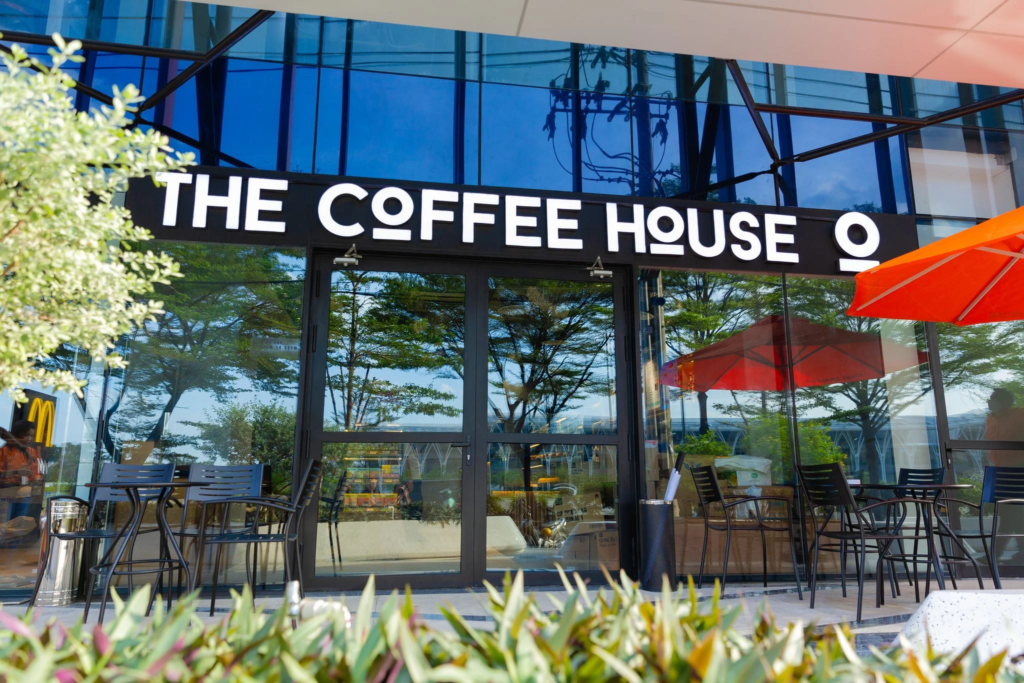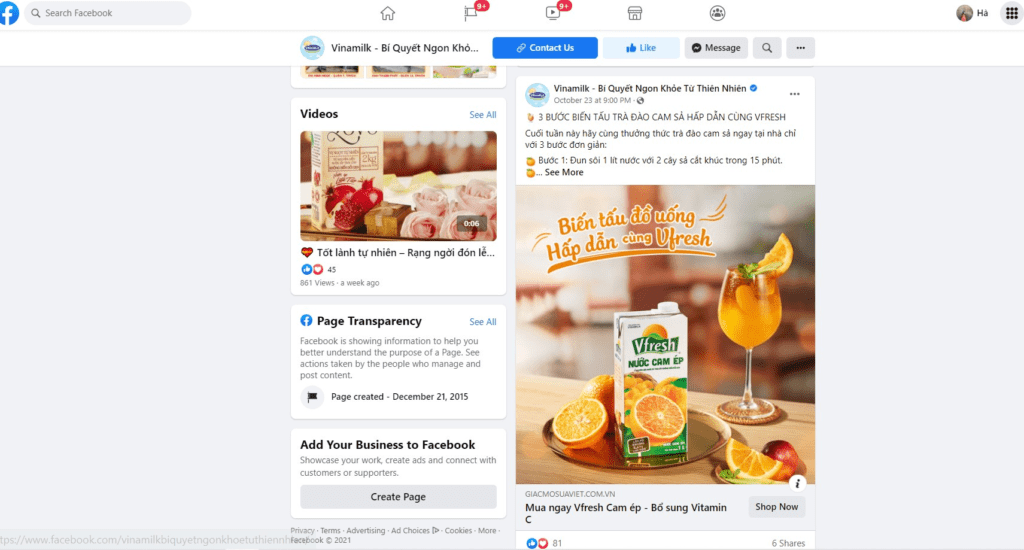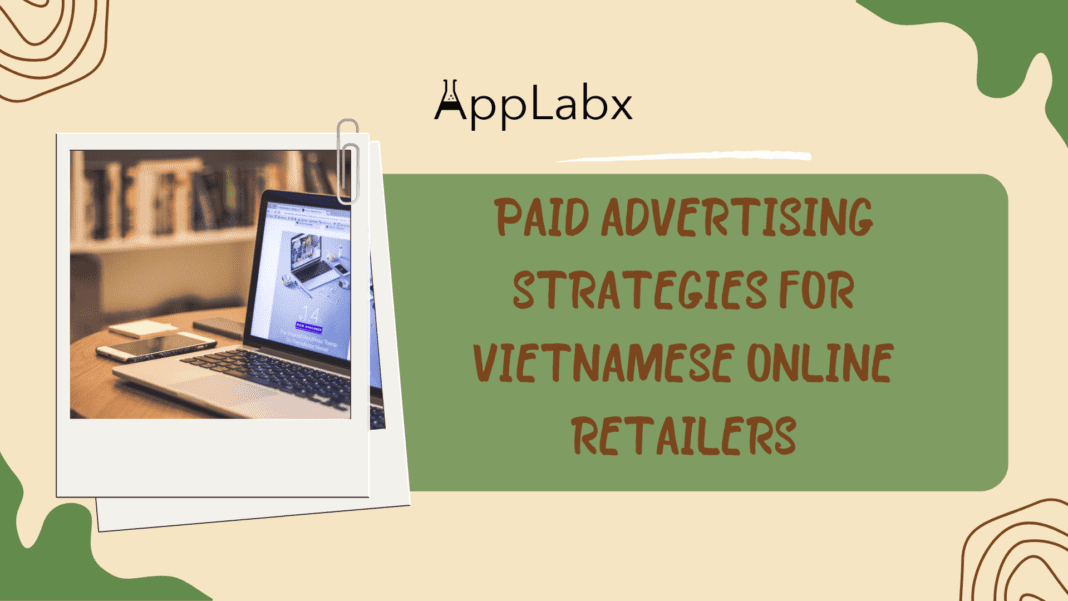Key Takeaways
- Localization is Key: Tailoring advertising strategies to align with Vietnamese culture, language, and consumer preferences is crucial for online retailers to resonate with the local audience.
- Dynamic Budget Management: Success in the Vietnamese e-commerce landscape demands agile budget allocation, scaling successful campaigns, and adapting strategies to peak seasons and events.
- Compliance Builds Trust: Adhering to legal frameworks, safeguarding consumer rights, and prioritizing data protection not only mitigates legal risks but also builds trust and credibility in the competitive digital marketplace.
In the vibrant landscape of Vietnam’s online retail sphere, where consumer preferences are as diverse as the rich tapestry of the nation itself, mastering the art of effective paid advertising has become an indispensable cornerstone for success.
As the digital marketplace in Vietnam continues to flourish, the competition among online retailers intensifies, making it crucial for businesses to not only establish a strong online presence but also strategically leverage paid advertising to capture the attention of their target audience.

Unveiling the Power of Paid Advertising
Welcome to our comprehensive guide on “Paid Advertising Strategies for Vietnamese Online Retailers,” where we embark on a journey to unravel the intricacies of advertising in a dynamic and culturally rich market.
In an era where digital connectivity is reshaping consumer behaviors at an unprecedented pace, understanding the nuances of paid advertising is paramount for businesses aspiring to thrive in the ever-evolving e-commerce landscape.
Setting the Stage: The Vietnamese Online Retail Renaissance
Before delving into the depths of paid advertising strategies, let’s paint a vivid picture of the online retail renaissance currently sweeping through Vietnam.
With a population that is not only tech-savvy but also known for its enthusiastic embrace of online shopping, the Vietnamese market presents a vast and lucrative playing field for ambitious e-commerce entrepreneurs.
From bustling metropolises to remote provinces, the appetite for online retail experiences is palpable, making it imperative for businesses to carve out their niche through strategic and impactful advertising.
Why Paid Advertising Matters More Than Ever
In an era saturated with digital noise, where every click and scroll competes for a consumer’s fleeting attention, the significance of paid advertising cannot be overstated.
It serves as the beacon that guides potential customers through the virtual aisles of online stores, ensuring that products and services are not lost in the crowded expanse of the internet.
Our exploration into paid advertising strategies is not just a tactical guide but a roadmap for businesses to navigate this intricate terrain, making their mark and standing out amidst the virtual cacophony.
Navigating the E-Commerce Seas: A Glimpse into Vietnamese Consumer Behavior
Before embarking on a strategic journey, it’s essential to understand the sailors – the consumers.
What motivates them to click ‘buy’ or ‘add to cart’?
What cultural subtleties influence their purchasing decisions?
These are the questions that form the compass guiding our advertising strategies.
From the bustling urban landscapes of Ho Chi Minh City to the serene waters of Ha Long Bay, consumer preferences vary, and our guide is crafted to help businesses tailor their paid advertising efforts to resonate with the heartbeats of the diverse Vietnamese market.
The Platforms That Power the Pixels: Overview of Advertising Platforms in Vietnam
In the vast sea of digital advertising platforms, choosing the right vessel can make all the difference.
From the omnipresent Facebook Ads to the search engine giant Google Ads and the regional favourite Zalo Ads, we dissect the features, benefits, and potential pitfalls of each platform.
This section is your compass, helping you navigate the turbulent waters of platform selection, ensuring that your advertising efforts are not only effective but also optimized for the specific demographics and behaviours of the Vietnamese consumer.
As we embark on this exploration of paid advertising strategies tailored for Vietnamese online retailers, prepare to uncover the secrets that will elevate your brand above the digital waves.
Join us as we dissect, analyze, and prescribe actionable insights that will empower your business to not just survive but thrive in the competitive and exhilarating world of online retail in Vietnam.
But, before we venture further, we like to share who we are and what we do.
About AppLabx
From developing a solid marketing plan to creating compelling content, optimizing for search engines, leveraging social media, and utilizing paid advertising, AppLabx offers a comprehensive suite of digital marketing services designed to drive growth and profitability for your business.
AppLabx is well known for helping companies and startups in Vietnam use paid advertising to drive web traffic to their websites and web apps.
At AppLabx, we understand that no two businesses are alike. That’s why we take a personalized approach to every project, working closely with our clients to understand their unique needs and goals, and developing customized strategies to help them achieve success.
If you need a digital consultation, then send in an inquiry here.
Paid Advertising Strategies for Vietnamese Online Retailers
- Understanding the Vietnamese Market
- Key Paid Advertising Platforms in Vietnam
- Crafting Effective Ad Campaigns
- Optimizing Ad Performance
- Budget Management and Cost Optimization
- Localizing Strategies for Success
1. Understanding the Vietnamese Market
The online retail landscape in Vietnam is a vibrant tapestry woven with cultural diversity, technological innovation, and a burgeoning middle class.
To embark on a successful paid advertising journey, it’s imperative to delve into the intricacies of the Vietnamese market, understanding its demographics, consumer behaviours, and the competitive e-commerce landscape.

Demographics and Consumer Behavior
- Population Dynamics:
- Vietnam boasts a population of 100,3 million people, making it a densely populated and promising market for online retailers.
- A considerable percentage of the population is under 35 years old, contributing to a tech-savvy and digitally engaged consumer base.
- Mobile Penetration:
- With about 61.3 million smartphones in use in Vietnam, mobile devices serve as a primary gateway to online shopping.
- Mobile-first strategies are paramount, with consumers often browsing and making purchases through mobile applications.
- Economic Growth and Middle-Class Expansion:
- Vietnam’s impressive economic growth has led to an expanding middle class, driving increased purchasing power and consumer spending.
- This demographic shift is reflected in online shopping preferences, with a rising demand for quality products and a seamless online shopping experience.
Popular E-commerce Platforms in Vietnam
- Shopee:
- Shopee has emerged as a dominant player in the Vietnamese e-commerce scene, offering a user-friendly platform and a wide range of products.

- Online retailers should consider Shopee as a key channel for advertising due to its extensive user base and features tailored to the local market.
- Lazada:
- Lazada, part of the Alibaba Group, is another major player in Vietnam, attracting a diverse customer base with its comprehensive product offerings.

- Its partnership with local brands and events positions it as a strategic platform for targeted advertising campaigns.
Competitor Analysis in the Vietnamese Online Retail Space
- Local vs. Global Competitors:
- Local players like Tiki compete with global giants like Amazon and Alibaba-backed platforms.
- Analyzing the strategies of successful competitors provides valuable insights for crafting effective advertising campaigns.
- Niche Markets:
- Identifying and understanding niche markets within the e-commerce landscape allows businesses to tailor their advertising strategies for specific consumer segments.
- For instance, the rising trend of eco-friendly products presents an opportunity for targeted campaigns.

Key Takeaways for Paid Advertising Strategies
- Mobile-Centric Approach:
- Crafting mobile-optimized ads is essential, given the prevalence of smartphone usage.
- Utilize features such as Facebook and Instagram’s mobile ad formats to enhance visibility and engagement.
- Cultural Sensitivity:
- Incorporate cultural elements in ad creatives and messaging to resonate with the local audience.
- Understand the significance of major festivals and events for targeted promotional campaigns.
- Platform-specific Strategies:
- Tailor campaigns based on the strengths and weaknesses of different e-commerce platforms.
- Leverage the popularity of in-app features, such as Shopee’s in-app games and Lazada’s flash sales, for increased visibility.
2. Key Paid Advertising Platforms in Vietnam
Navigating the dynamic landscape of Vietnam’s online retail market requires a strategic approach to paid advertising.
With a multitude of platforms vying for attention, understanding the strengths, audience reach, and unique features of each is paramount for effective campaigns.
In this section, we explore the key paid advertising platforms in Vietnam, shedding light on their individual merits and how businesses can leverage them for optimal results.

Overview of Popular Advertising Platforms
- Facebook Ads:
- Dominance in Social Media: Facebook was the most popular social media platform in Vietnam as of the first half of 2023.
- Diverse Ad Formats: From image and video ads to carousel and collection ads, businesses can choose versatile formats to showcase products effectively.
- Granular Targeting Options: Facebook’s robust targeting options enable advertisers to reach specific demographics, interests, and behaviours.

- Google Ads:
- Search Engine Dominance: In 2023, Google dominated the search engine market in Vietnam with a share of approximately 97 per cent.
- Keyword-based Advertising: Google Ads allows businesses to target users actively searching for products or services, ensuring high intent among the audience.
- Display Network: Beyond search, Google’s Display Network enables visual ads across a vast array of websites, reaching a broader audience.

- Zalo Ads:
- Vietnam’s Homegrown Platform: Zalo, a popular messaging app in Vietnam, has grown into a multifunctional platform with its advertising arm, Zalo Ads.
- In-App Advertising: Zalo Ads allows businesses to engage users directly within the messaging app, capitalizing on its extensive user base.
- Targeting Features: Advertisers can target users based on demographics, interests, and behaviors, ensuring precise reach.

Comparative Analysis of Platform Features and Audience Reach
- Facebook Ads vs. Google Ads:
- Audience Behavior: While Facebook is more social and visual, Google Ads taps into users actively searching for information or products.
- Ad Formats: Facebook excels in creative ad formats, whereas Google’s strength lies in text and display ads.
- Costs and ROI: Businesses should weigh the cost-per-click (CPC) and return on investment (ROI) on each platform to optimize advertising budgets.
- Zalo Ads vs. International Platforms:
- Localized Engagement: Zalo’s strength lies in its deep integration into Vietnamese culture and daily life, offering a localized touch that international platforms may lack.
- User Base: Understanding Zalo’s user base, which includes a diverse demographic, allows for targeted and culturally resonant advertising.
- Ad Auction Dynamics: Advertisers should familiarize themselves with Zalo’s ad auction system to maximize visibility and performance.
Budget Considerations for Each Platform
- Facebook Ads Budgeting:
- Flexible Budgeting: Advertisers can set daily or lifetime budgets, adjusting them based on campaign performance.
- Bid Strategies: Understanding bid strategies, such as cost-per-click (CPC) or cost-per-impression (CPM), helps optimize spending.
- Google Ads Budgeting:
- AdWords Auction System: Advertisers bid for ad placement, and budget allocation should align with the competitiveness of chosen keywords.
- Daily and Campaign Budgets: Setting daily and campaign budgets ensures control over spending, preventing unexpected costs.
- Zalo Ads Budgeting:
- Bid Types: Zalo offers bid types like cost-per-click (CPC) and cost-per-impression (CPM), allowing advertisers to choose the most suitable for their objectives.
- Ad Placement Considerations: Costs may vary based on ad placement within the app, and strategic placement can impact budget efficiency.
3. Crafting Effective Ad Campaigns
In the bustling digital marketplace of Vietnam, where competition for consumer attention is fierce, crafting ad campaigns that not only captivate but convert is a strategic imperative.
This section delves into the intricacies of creating effective ad campaigns, exploring key elements such as setting clear objectives, audience targeting, creative content, and the importance of localization.

Setting Clear Campaign Objectives
- Define Specific Goals:
- Clearly outline the objectives of the ad campaign, whether it’s to increase brand awareness, drive website traffic, or boost sales.
- Aligning objectives with measurable Key Performance Indicators (KPIs) ensures a focused and trackable campaign.
- SMART Goals:
- Employ the SMART (Specific, Measurable, Achievable, Relevant, Time-bound) framework to set goals that are precise, quantifiable, attainable, relevant, and bound by a timeline.

- For example, aim to achieve a 20% increase in online sales within the next three months.
Targeting the Right Audience Segments
- Demographic Targeting:
- Leverage the detailed demographic targeting options provided by platforms like Facebook Ads to reach specific age groups, genders, and locations.
- Understand the demographics of your product or service and tailor your targeting accordingly.
- Behavioral Targeting:
- Utilize behavioral targeting to connect with consumers based on their online behavior, preferences, and past interactions.
- For instance, target users who have previously visited your website or engaged with your social media content.
- Lookalike Audiences:
- Platforms like Facebook allow advertisers to create lookalike audiences, targeting users similar to their existing customer base.
- This strategy enhances the likelihood of reaching potential customers with similar preferences and behaviors.
Creating Compelling Ad Creatives
- Visual Appeal:
- Invest in visually appealing creatives that instantly capture attention in the scrolling landscape of social media feeds.
- Use high-quality images, vibrant colors, and concise yet impactful copy.
- Video Content:
- Leverage the growing popularity of video content, as videos are proven to drive higher engagement and conversion rates.
- Craft short and compelling videos that convey the brand message effectively.
- Storytelling:
- Embrace the power of storytelling to create an emotional connection with the audience.
- Share success stories, customer testimonials, or behind-the-scenes glimpses to humanize the brand.
Utilizing Local Language and Cultural Nuances
- Language Adaptation:
- Craft ad copy in the local language, ensuring it resonates with the predominantly Vietnamese-speaking audience.
- Utilize colloquial expressions and idioms for a more authentic connection.
- Cultural Sensitivity:
- Understand and respect cultural nuances to avoid inadvertently offensive content.
- Align campaigns with local traditions, festivals, and events for increased relatability.
- Localization Examples:
- Tet Holiday Campaigns: Brands often roll out special campaigns during Tet (Lunar New Year), incorporating festive elements and well-wishes to connect with the celebratory spirit.
- National Independence Day Promotions: Crafting campaigns around significant national events fosters a sense of patriotism and resonates positively with the audience.
4. Optimizing Ad Performance
Optimizing ad performance in the dynamic landscape of digital advertising is an ongoing pursuit, requiring a strategic blend of data analysis, testing, and adaptation.
This section delves into the crucial aspects of monitoring key performance indicators (KPIs), conducting A/B testing, implementing retargeting strategies, and making data-driven decisions to enhance the effectiveness of ad campaigns.

Monitoring Key Performance Indicators (KPIs)
- Click-Through Rate (CTR):
- Definition: CTR measures the percentage of users who click on an ad after seeing it.
- Importance: A high CTR indicates that the ad resonates with the audience, while a low CTR may suggest a need for adjustments.
- Benchmark: The average click-through rate (CTR) for Facebook ads across all industries is 0.90%.
- Conversion Rate:
- Definition: The conversion rate tracks the percentage of users who take the desired action, such as making a purchase, after clicking on an ad.
- Importance: A higher conversion rate indicates that the ad effectively persuades users to complete the intended action.
- Benchmark: The average conversion rate of e-commerce websites is 2.86%.
- Return on Ad Spend (ROAS):
- Definition: ROAS measures the revenue generated for every dollar spent on advertising.
- Importance: A positive ROAS signifies a profitable campaign, while a negative ROAS suggests the need for budget adjustments.
A/B Testing for Continuous Improvement
- Testing Ad Copy:
- Purpose: A/B testing allows advertisers to compare different versions of ad copy to identify which performs better.
- Example: Test variations of headlines, calls-to-action, or promotional messaging to discern the most effective language.
- Visual Elements Testing:
- Purpose: Evaluate the impact of visuals, such as images or videos, on user engagement and conversion rates.
- Example: Compare the performance of different images or video content to determine which resonates best with the target audience.
- Audience Targeting Testing:
- Purpose: Assess the effectiveness of different audience segments in driving desired actions.
- Example: Test variations in demographic targeting, interests, or behaviors to identify the most responsive audience.
Implementing Retargeting Strategies
- Cart Abandonment Retargeting:
- Strategy: Target users who visited the website, and added items to the cart but did not complete the purchase.
- Example: Display retargeting ads featuring the abandoned products, along with incentives like discounts or free shipping.
- Website Engagement Retargeting:
- Strategy: Retarget users who visited specific pages on the website but did not convert.
- Example: Show ads highlighting products or services related to the pages visited, encouraging users to revisit and complete the desired action.
- Dynamic Retargeting:
- Strategy: Display personalized ads showcasing products or services that users previously viewed on the website.
- Example: A user who viewed a specific product could see an ad featuring that exact product, increasing the likelihood of conversion.
Data-Driven Decision-Making
- Google Analytics for Performance Insights:
- Tool: Utilize Google Analytics to gain comprehensive insights into user behavior, traffic sources, and conversion data.
- Example: Analyze the performance of different traffic sources to allocate budget to the most effective channels.
- Facebook Analytics for Audience Insights:
- Tool: Leverage Facebook Analytics to understand audience demographics, engagement patterns, and conversion paths.
- Example: Identify top-performing audience segments and tailor ad campaigns to reach similar users.
- Platform-Specific Analytics:
- Strategy: Platforms like Facebook Ads Manager and Google Ads provide granular insights into ad performance.
- Example: Analyze demographic data, device usage, and time-of-day performance to optimize targeting and scheduling.
5. Budget Management and Cost Optimization
Effective budget management and cost optimization are paramount for online retailers in Vietnam to ensure a sustainable and profitable presence in the competitive digital landscape.
This section delves into key strategies for establishing advertising budgets, managing costs efficiently, and optimizing expenditures to maximize returns.

Establishing an Effective Advertising Budget
- Setting Realistic Goals:
- Clearly define campaign objectives and align them with the broader business goals.
- Establishing realistic and achievable targets serves as the foundation for determining the appropriate advertising budget.
- Consideration of Industry Benchmarks:
- Analyze industry benchmarks for advertising spending to gauge the typical budget allocation within the sector.
- Benchmarks provide insights into the competitive landscape and help in setting budget expectations.
- Revenue-Based Budgeting:
- Tie advertising budgets directly to revenue goals to ensure a proportional investment in marketing efforts.
- Allocate a percentage of expected revenue for advertising, considering the industry average and business growth objectives.
Cost-Per-Click (CPC) and Cost-Per-Acquisition (CPA) Strategies
- Understanding CPC:
- Focus on optimizing Cost-Per-Click (CPC) by refining targeting, ad quality, and relevance.
- A lower CPC ensures efficient spending, especially on platforms like Google Ads where advertisers pay for each click.
- Cost-Per-Acquisition (CPA) Optimization:
- Analyze the cost-effectiveness of customer acquisition by tracking the Cost-Per-Acquisition (CPA).
- Adjust targeting parameters, ad creatives, and landing pages to optimize CPA and maximize the value of each conversion.
- Adaptation to Platform Dynamics:
- Different advertising platforms have varying CPC and CPA dynamics. Adapt strategies based on the platform’s auction system and bidding processes.
- For instance, on Facebook Ads, understanding the relevance score and bid strategies can impact cost efficiency.
Scaling Successful Campaigns and Reallocating Budgets
- Identifying High-Performing Channels:
- Regularly monitor the performance of different advertising channels and identify those delivering the best ROI.
- Allocate more budget to high-performing channels to scale successful campaigns and maximize impact.
- Adaptive Budget Reallocation:
- Be agile in reallocating budgets based on real-time performance data.
- If a particular campaign or channel consistently outperforms others, consider reallocating the budget from underperforming areas to capitalize on success.
- Geographic and Demographic Adjustments:
- Tailor budget allocations based on the geographic and demographic performance of campaigns.
- If specific regions or audience segments show higher conversion rates, adjust budgets accordingly to maximize impact in those areas.
Localizing Budgets for Seasonal Peaks and Events
- Understanding Seasonal Trends:
- Analyze historical data to identify seasonal peaks and trends in consumer behavior.
- Adjust advertising budgets to capitalize on peak seasons, such as major holidays or shopping festivals.
- Specialized Campaigns for Events:
- Allocate specific budgets for campaigns tied to local events, festivals, or holidays.
- For example, during Tet (Lunar New Year), creating special campaigns with dedicated budgets can enhance brand visibility and engagement.
- Dynamic Budget Adjustments:
- Implement dynamic budget adjustments during peak times to capture increased consumer attention.
- Platforms like Google Ads allow for automated bidding strategies that adapt to real-time demand fluctuations.
6. Localizing Strategies for Success
In the dynamic landscape of online retail in Vietnam, localization is a key factor that can significantly impact the success of marketing strategies.
Understanding and adapting to the local culture, language, and consumer behavior are crucial elements for businesses aiming to establish a strong and resonant presence.
This section explores the importance of localizing strategies and provides actionable insights, supported by relevant examples and data.

Understanding the Vietnamese Consumer Landscape
- Cultural Nuances and Traditions:
- Importance: Vietnamese consumers are deeply influenced by cultural nuances and traditions. Understanding and respecting these aspects is fundamental for effective localization.
- Example: During Tet (Lunar New Year), campaigns incorporating traditional elements and well-wishes resonate positively with the audience.
- Language Localization:
- Importance: Vietnamese is the official language, and communicating in Vietnamese is essential for connecting with the majority of the population.
- Example: Lazada, a leading e-commerce platform, ensures all communications, including ads and product descriptions, are in Vietnamese to enhance accessibility.
Tailoring Content for Local Preferences
- Content Formats and Preferences:
- Adaptation: Tailor content formats to align with local preferences. Video content, vibrant visuals, and concise messaging are often well-received.
- Example: Shopee, another major e-commerce player, effectively utilizes video content in its campaigns to engage users visually.
- Localization of Product Descriptions:
- Strategy: Provide detailed and culturally relevant product descriptions in Vietnamese.
- Example: The Coffee House, a Vietnamese coffee chain, adapts its online product descriptions to resonate with local coffee culture.

Platform-Specific Strategies
- Social Media Dominance:
- Platform Choice: Vietnamese consumers are highly active on social media platforms, with Facebook being the most popular.
- Example: Businesses like Vinamilk leverage Facebook Ads to connect with a vast audience, incorporating engaging visuals and culturally resonant content.
- Zalo’s Localized Approach:
- Platform Preference: Zalo, a popular messaging app in Vietnam, is a key platform for communication.

Mobile-First Strategies
- Mobile Internet Usage:
- Dominance of Mobile: Vietnam has a high penetration of mobile internet usage, making mobile-first strategies imperative.
- Example: E-commerce platforms like Tiki optimize their websites and apps for mobile users, ensuring seamless and user-friendly experiences.
- SMS Marketing Localization:
- Strategy: Utilize SMS marketing considering its popularity and effectiveness.
- Example: Brands like Mobile World leverage SMS marketing during promotional events, showcasing products and discounts directly to users’ mobile phones.
Local Partnerships and Influencer Collaborations
- Collaborations with Local Influencers:
- Influencer Marketing: Partnering with local influencers can add authenticity and credibility to campaigns.
- Example: Adidas collaborated with Vietnamese influencers during the launch of a new collection, effectively tapping into their followers and local influence.
- Strategic Local Partnerships:
- Importance: Forge partnerships with local businesses or influencers to enhance brand visibility and trust.
- Example: The cooperation between Vinamilk and local retailers during festive seasons demonstrates the impact of strategic partnerships.
Data-Driven Localization Decisions
- Consumer Behavior Analytics:
- Importance: Leverage data analytics tools to understand consumer behavior and preferences.
- Example: Lazada utilizes consumer behavior data to optimize product recommendations, enhancing personalization.
- Platform-Specific Analytics Utilization:
- Tools: Utilize analytics provided by advertising platforms to gain insights into local audience behavior.
- Example: Facebook Ads Manager provides detailed analytics, allowing businesses to tailor campaigns based on platform-specific performance metrics.
Conclusion
In the bustling realm of Vietnamese e-commerce, the orchestration of paid advertising strategies is akin to a symphony where each note resonates with a diverse and dynamic audience.
As we unravel the intricacies of paid advertising, from understanding the nuances of the Vietnamese market to crafting compelling ad campaigns, optimizing performance, and managing budgets, it becomes evident that success in this landscape demands not just visibility but strategic precision.
A Dynamic Vietnamese Market
Vietnam’s online retail market is a tapestry woven with cultural richness, technological dynamism, and evolving consumer behaviors.
Localizing strategies to align with the pulse of the Vietnamese market isn’t just a recommendation; it’s a strategic imperative. From embracing cultural nuances to tailoring content formats, successful advertisers dance harmoniously with the rhythms of the local audience.
Key Platforms as Catalysts for Success
Delving into the key advertising platforms in Vietnam unveils a landscape where giants like Google Ads and Facebook Ads reign supreme. Understanding their dynamics, algorithms, and user behaviors is akin to deciphering the code to unlock targeted visibility.
Crafting Effective Ad Campaigns
The artistry of crafting effective ad campaigns involves more than catchy headlines and vibrant visuals.
It’s a science that involves A/B testing, understanding audience personas, and creating narratives that resonate.
Optimizing Ad Performance
Optimizing ad performance is a continuous evolution, a journey where data becomes the compass.
From monitoring key performance indicators like CTR and conversion rates to conducting A/B tests and implementing retargeting strategies, the trajectory toward success is paved with data-driven decisions.
Budget Management and Cost Optimization
In the world of paid advertising, managing budgets isn’t just about numbers; it’s about strategic allocation.
From setting realistic goals to adapting budgets based on performance, the journey to cost optimization is a testament to fiscal acumen.
Localizing Strategies for Success
As businesses traverse the digital landscape, localizing strategies emerges as the linchpin for resonance.
From understanding cultural nuances and tailoring content to navigating platform preferences and fostering local partnerships, the tales of success showcase that localization isn’t just a checkbox—it’s the heart of meaningful connections.
A Symphony of Success in Vietnamese E-Commerce
As we draw the curtain on the exploration of paid advertising strategies for Vietnamese online retailers, it becomes evident that success is an intricate symphony—a melodic interplay of strategy, localization, compliance, and dynamic adaptation.
From the bustling streets of Hanoi to the tranquil landscapes of Da Nang, the digital frontier of Vietnamese e-commerce beckons businesses to not just participate but to lead, innovate, and resonate.
The journey doesn’t end here; it evolves. The strategies outlined are not just static guidelines but invitations to an ongoing exploration—a journey where each click, conversion, and engagement shapes the narrative of success.
As Vietnamese online retailers embark on this odyssey, armed with insights, strategies, and a pulse on the ever-changing landscape, the symphony of success awaits—a crescendo of visibility, engagement, and triumph in the vibrant and thriving world of Vietnamese e-commerce.
If you are looking for a top-class digital marketer, then book a free consultation slot here.
If you find this article useful, why not share it with your friends and business partners, and also leave a nice comment below?
We, at the AppLabx Research Team, strive to bring the latest and most meaningful data, guides, and statistics to your doorstep.
To get access to top-quality guides, click over to the AppLabx Blog.
People also ask
What is the best marketing strategy for an online store?
The best marketing strategy for an online store combines a strong digital presence, targeted social media campaigns, and SEO optimization. Utilize engaging content, influencer collaborations, and customer reviews to build trust. Regularly analyze data for continuous optimization and adaptability in the dynamic digital landscape.
What are the segments of the e-commerce industry in Vietnam?
The e-commerce industry in Vietnam comprises diverse segments, including retail e-commerce, online travel, digital services, and food delivery. With a rapidly growing internet user base, each segment experiences dynamic evolution, presenting opportunities for retailers, service providers, and tech-driven ventures.
What are the challenges of e-commerce in Vietnam?
E-commerce in Vietnam faces challenges such as logistics infrastructure, payment methods, consumer trust, and regulatory complexities. Overcoming these hurdles requires strategic solutions, emphasizing local adaptation, digital literacy, and collaboration between businesses and regulatory bodies.




































